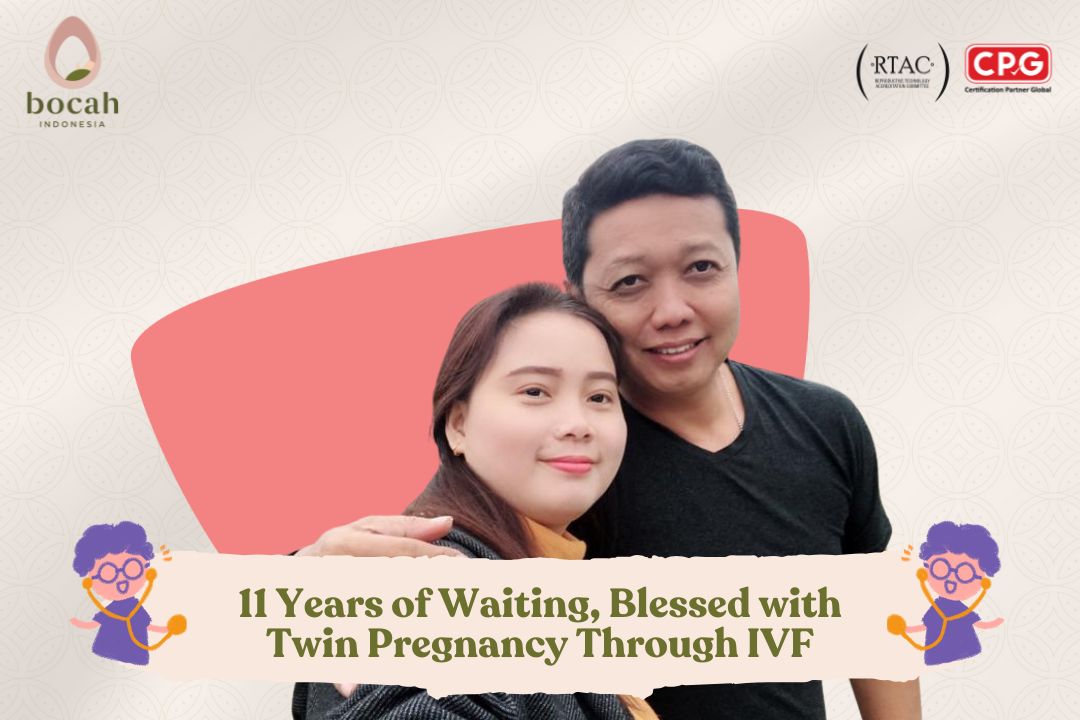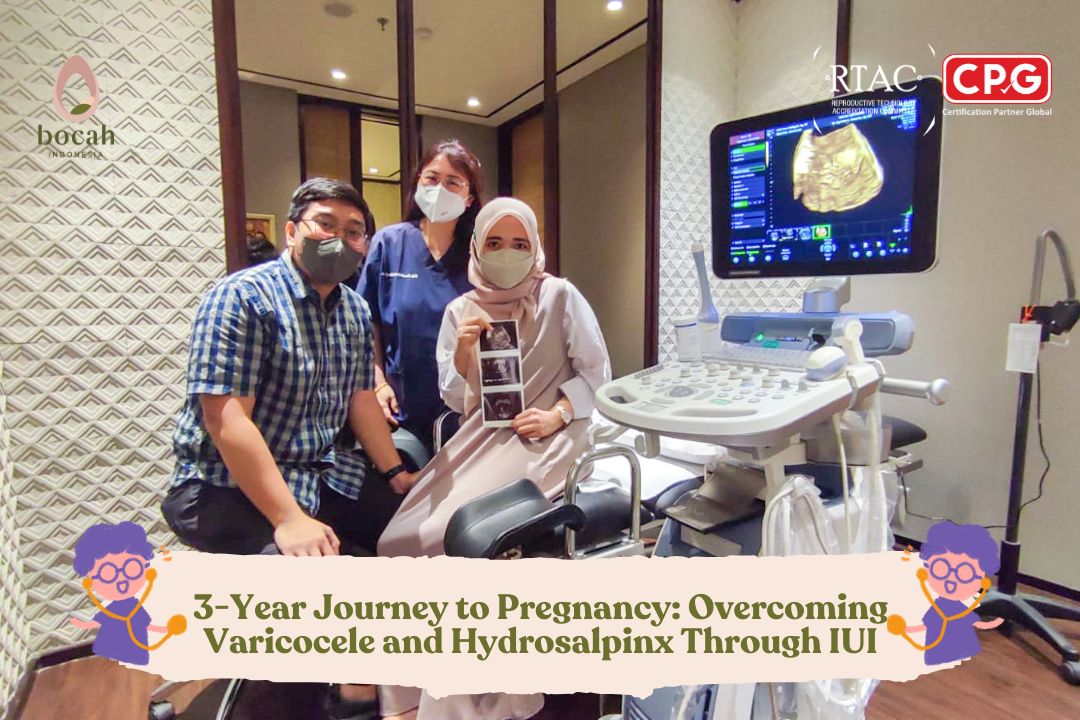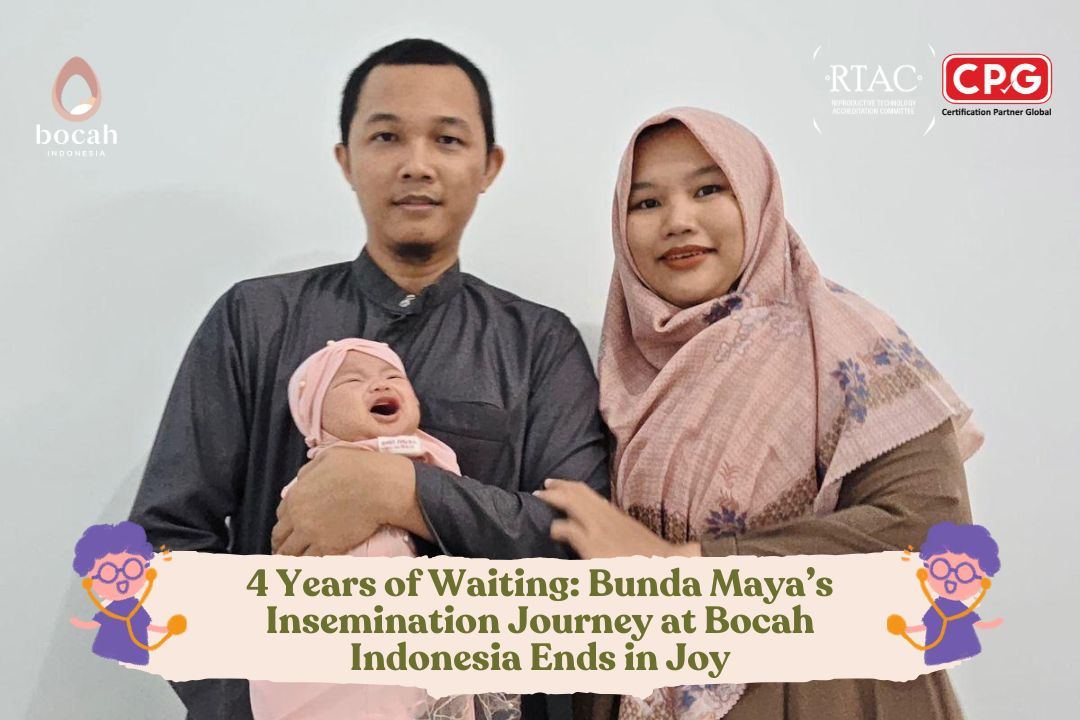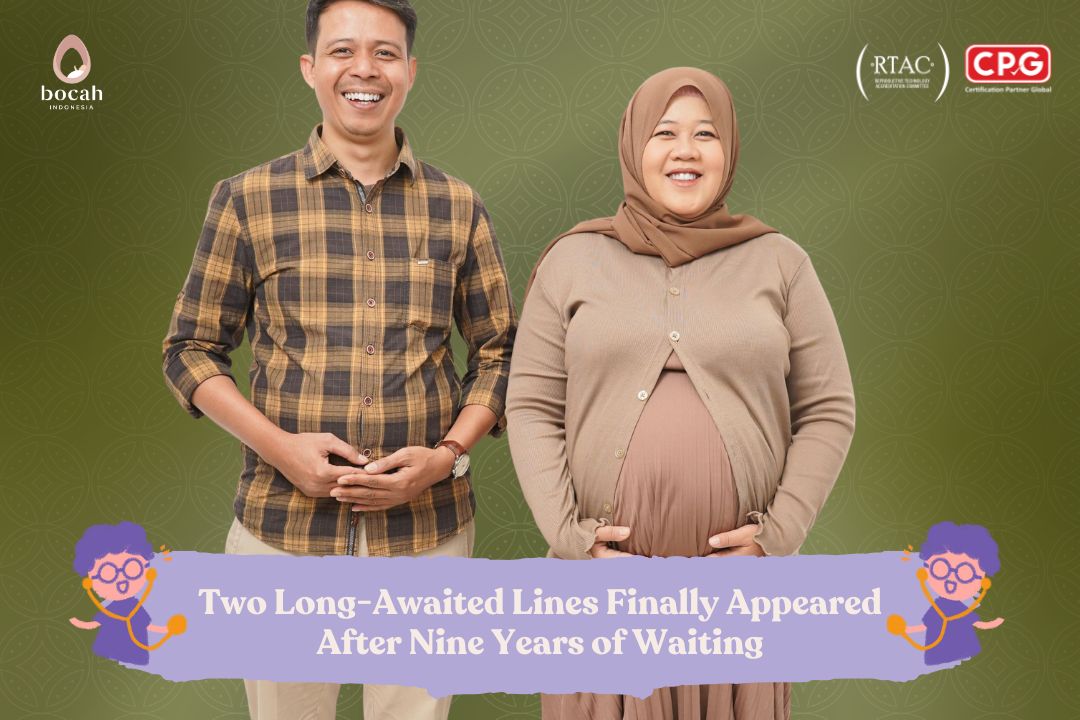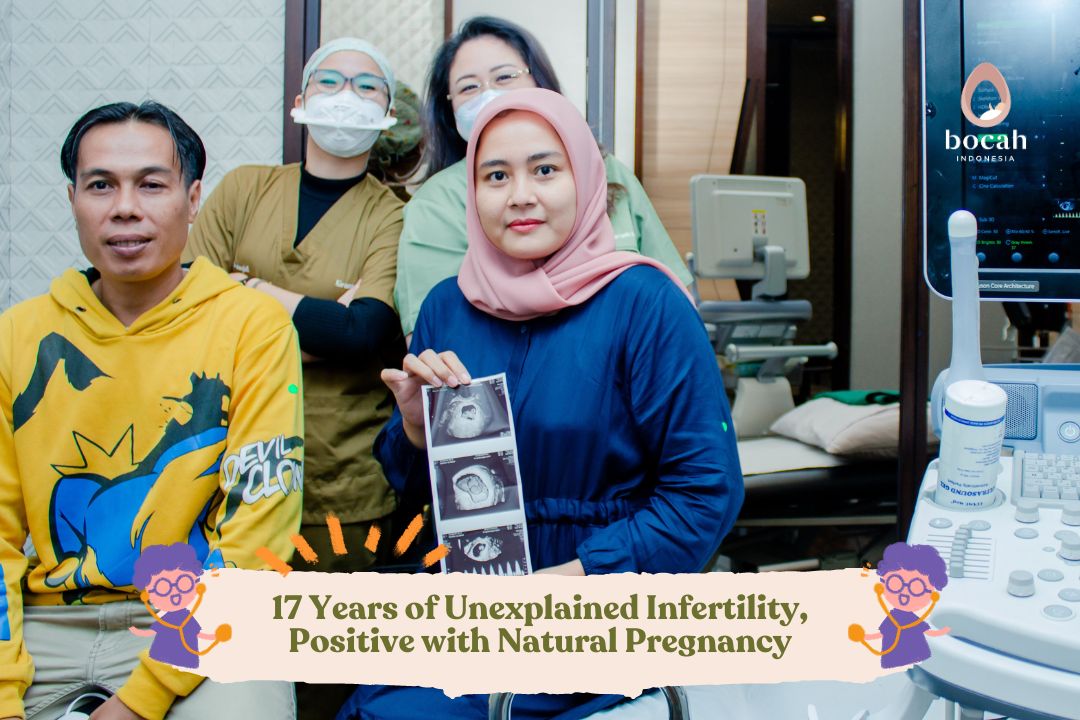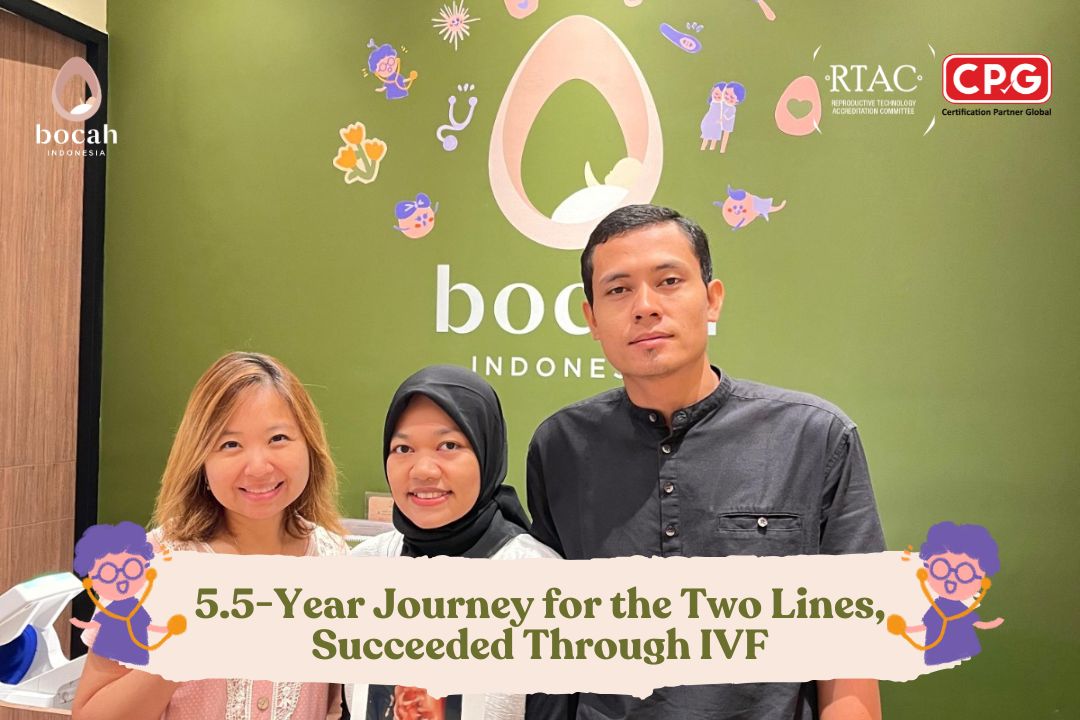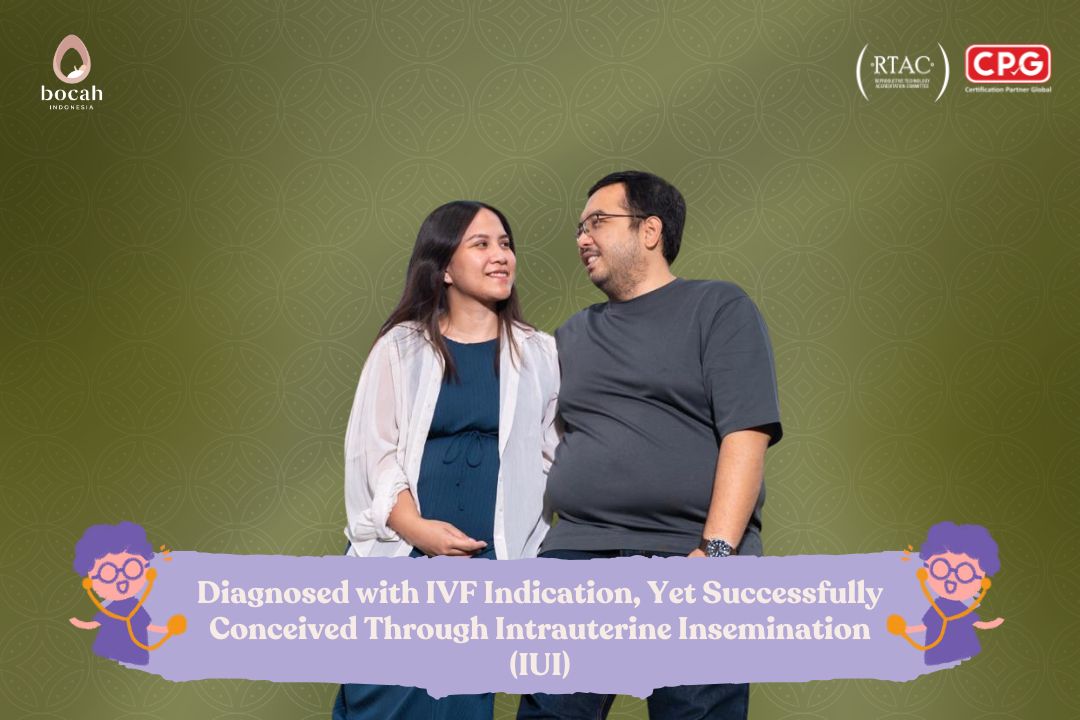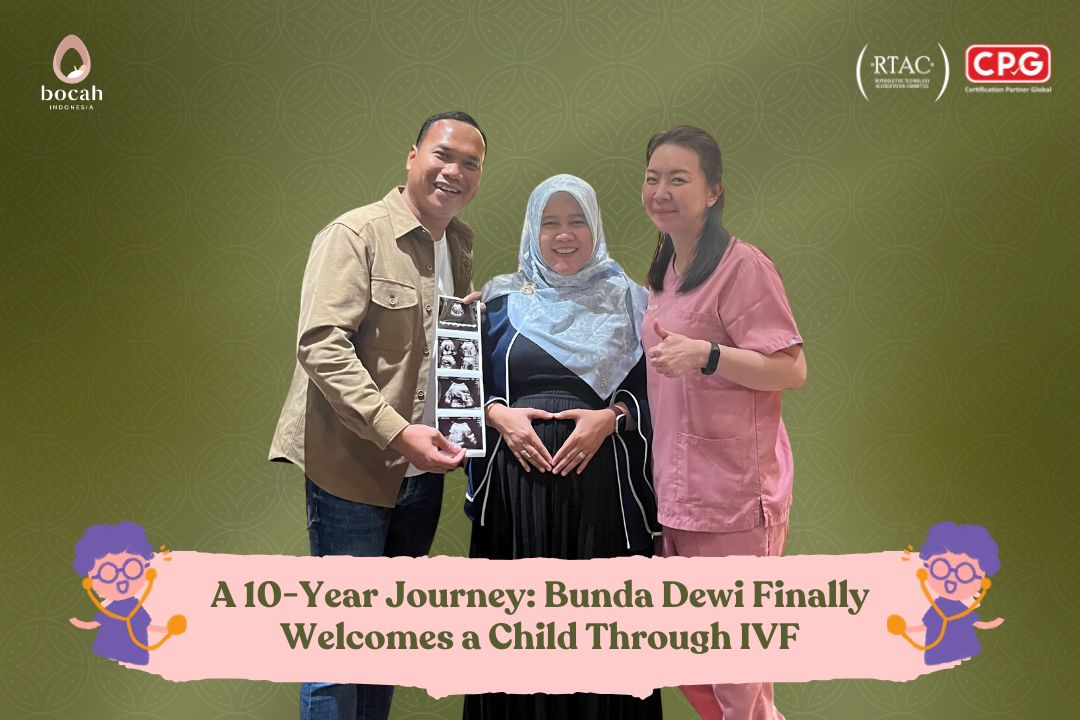6 Years of Waiting: Overcoming Infertility and Blessed with Triplets Through IVF
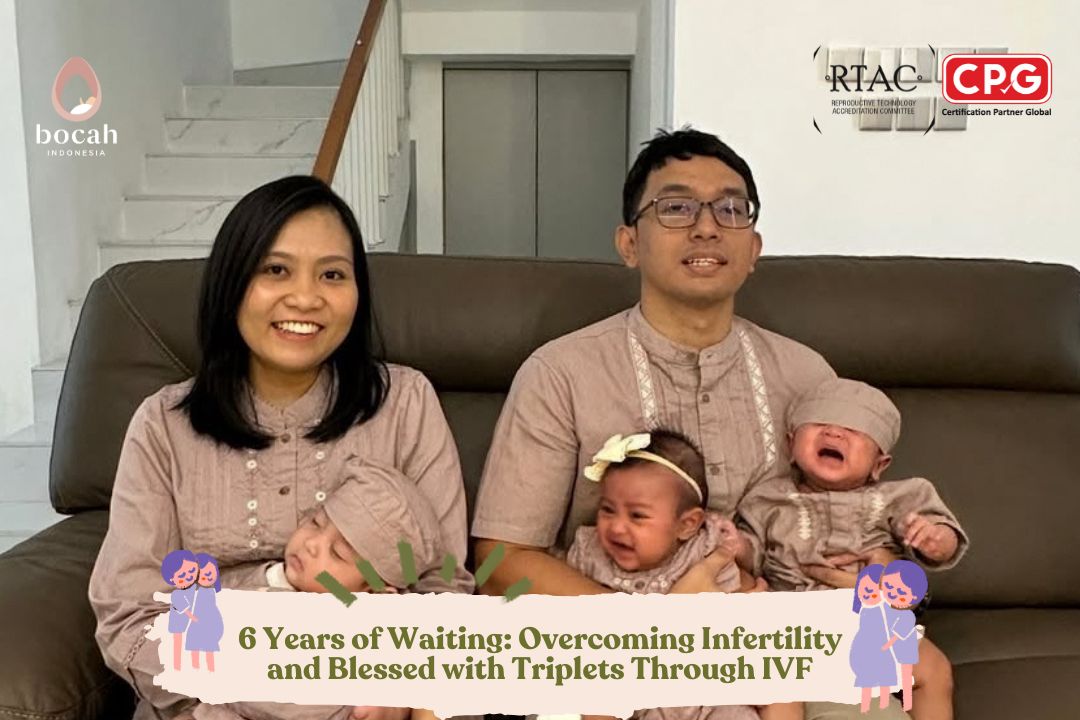
Facing male infertility due to low sperm count and uterine polyps in the wife, this couple’s struggle to have children ended happily.
One type of male infertility is low sperm count, also known as oligospermia. Normally, a healthy sperm count is about 15 million per milliliter of semen. However, in cases of low sperm count, the number falls below 15 million per milliliter.
Oligospermia makes it difficult for couples to conceive because it reduces the chances of sperm successfully fertilizing the egg. This was the condition experienced by Mrs. Retno Ayu Malika and her husband. The husband was diagnosed with low sperm count, which prolonged their journey to have children, requiring more time and effort.
Diagnosed with Uterine Polyps
In addition, the wife, Mrs. Retno Ayu Malika, was also diagnosed with uterine polyps. Despite both facing infertility challenges, their determination and efforts to have children never ceased, even after waiting for six years.
Uterine polyps are abnormal growths on the inner lining of the uterus (endometrium). Most polyps are benign, but in some cases, they can develop into malignant growths. In uterine polyps, the tissue grows into the uterine cavity, attaching to the uterine wall through a stalk. This is one of the key differences between polyps and other conditions such as uterine fibroids, which generally do not have a stalk.
Tanya Mincah tentang Promil?
Polyps can cause irritation to the uterine wall, making it harder for sperm to reach the egg. The inflammation can also interfere with embryo development, especially in the early stages of pregnancy. Therefore, polyps may contribute to fertility problems.
Undergoing Hysteroscopy
Due to the polyps, Mrs. Retno underwent a hysteroscopy procedure to remove them. Hysteroscopy is performed to examine the condition of the cervix and uterus using a thin, flexible tube with a camera at the end, called a hysteroscope.
There are two types of hysteroscopy: diagnostic and operative. Diagnostic hysteroscopy is used to examine the cervix and uterus, while operative hysteroscopy is performed when abnormalities that require treatment are found. In Mrs. Retno’s case, operative hysteroscopy was conducted.
Undergoing IVF (In Vitro Fertilization) Program
With strong determination, the couple proceeded with an IVF program. Mrs. Retno was treated and supervised by Dr. William Tahono, Sp.OG, an obstetrics and gynecology specialist, while her husband was assisted by Dr. Tiara Kirana, Sp.And, an andrology specialist, throughout the treatment and IVF preparation.
Through unwavering prayers and efforts, their six-year wait ended sweetly. The long-awaited positive result on the pregnancy test finally arrived.
Uniquely, they were not blessed with just one baby, but three babies at once. Mrs. Retno and her husband are now preparing to welcome their triplets into the world.
To all parents still striving to see the two lines on the test strip, stay strong and never give up. Continuous efforts and prayers will eventually bear fruit. Don’t hesitate to consult with Bocah Indonesia to start your own journey!
Source:
- Jee, BC., Jeong, HG. (2021). Management of endometrial polyps in infertile women: A mini-review. Clin Exp Reprod Med. 2021 Jul 30;48(3):198–202.
- Nijkang, NP., et al. (2019). Endometrial polyps: Pathogenesis, sequelae and treatment. SAGE Open Med. 2019 May 2:7:2050312119848247.
- Bosteels, J., et al. (2018). Hysteroscopy for treating subfertility associated with suspected major uterine cavity abnormalities. Cochrane Database Syst Rev. 2018 Dec 5;12(12):CD009461.
- Ajayi, AB., et al. (2018). Low Sperm Counts: Biophysical Profiles of Oligospermic Males in Sub-Saharan Africa. Open Journal of Urology 08(08):228-247.


